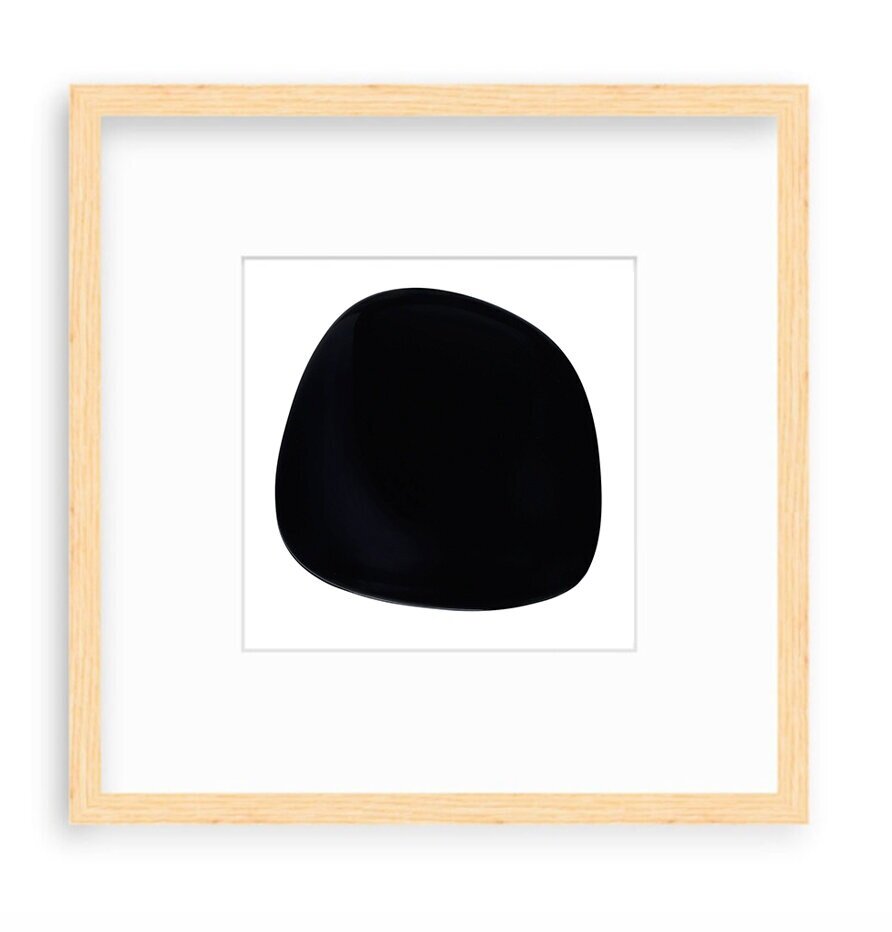




La Forme Noire (5-Part Series: Circle, Gumdrop, Rhombus, Smoosh, Square)
La Forme Noire
2020
La Forme Noire is an installation of unaltered, found digital photographs. The series blurs the boundaries between abstraction and representation, the art image and the functional image, the art object and the functional object, image-ness and object-ness, aesthetics and utilitarianism, art and commodity, beauty and reality.
La Forme Noire reveals how a photograph can simultaneously portray and betray reality. It also questions what the purpose of an image is. This series takes found functional images (product photographs meant to accurately yet attractively represent an object for the purposes of selling that object), re-contextualizes them, and reintroduces them as abstract, minimalist artworks. What appear to be flat, abstract shapes are actually three-dimensional, physical objects depicted against a white photo backdrop. But when the photos are removed from their original context, the objects in the photographs become utterly unrecognizable, and the images no longer serve their intended purpose: to market a sellable product. Suddenly, form far outweighs function, and we appreciate the images because they are simple, lovely, and most importantly, they don’t ask anything of us (at least upon first glance). The original object may have an “add to cart” button associated with it, but the image itself does not. We can consume and enjoy the digital images for free! (Not counting the cost of your internet bill.)
But there is a monetary value attached to these images—even if, to you, that value is $0. At the crux of La Forme Noire is an interest in commodity, and the work calls attention to the asynchronicities and absurdities in our systems of valuation. The Gumdrop series, for example, features three different images of Chiavari Chair Cushions from three different vendors listed across three different retail websites. The same chair cushion is priced differently across all three platforms, yet the product image used to market and sell the item is virtually the same. Therefore, while the price of the object varies, the image of the object has the same value across all three platforms.
… Or does it?
Le Forme Noire asks this very question by positioning the images as commodities in and of themselves (framed photographs available as Sellables). Even though the framed prints are equal in size and cost the same to produce, they are listed at different price points because their monetary value is determined, in part, by the price of the actual item in the photograph.
You can scroll right now to see the digital images for free, but when the same digital image is called Art, then is printed and framed, does the value of the image change? Keep in mind—the framed print becomes not just an image but an object that requires additional material and human resources, which each have their own values (the paper, the ink, the printer used to print the image, the frame, the packing materials, the physical transport of the framed print from producer to consumer). And all of that is certainly accounted for in the price of the framed print. But let’s put that aside. Does the value of the image change?
Of course it does, because context is so deeply important to our ingrained perceptions of value. Just like the value of La Forme Noire will increase if the framed prints aren’t just hanging in my living room, but they’re also hanging in yours. Or in Axel Vervoordt’s living room. Or in Kim’s living room. Just like the value of La Forme Noire will increase if it leaves the confines of my studio and is given provenance through inclusion in a notable exhibition…
La Forme Noire (Grid Series: Squares, Circles, Gumdrops)
